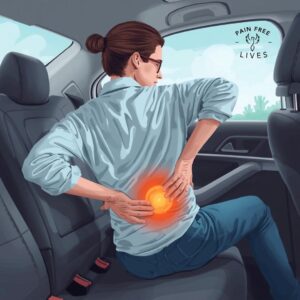For decades, doctors warned us about the dangers of smoking. Today, a new culprit has entered the spotlight: sitting. It may not fill your lungs with toxins, but sitting for long stretches has earned the nickname “the new smoking” because of its far-reaching health consequences. And while it affects many areas of the body, one part suffers the most, the back.
In a world where work, travel, and even leisure revolve around sitting, understanding how it impacts your spine is essential for protecting long-term health.
The Rise of a Sitting Culture
Modern life is built around chairs. Office jobs keep us glued to desks, long commutes trap us in cars, and downtime often means sinking into the couch with a phone or TV remote. The average person spends more than 8–10 hours a day sitting, which is far beyond what the human body was designed to handle.
Our ancestors were hunters, gatherers, builders, and farmers. Their bodies were in near-constant motion. Our bodies today haven’t evolved to thrive in a sedentary world. Instead, they respond with stiffness, pain, and degenerative changes, particularly in the spine.
Why Sitting Hurts Your Back
When you sit, especially with poor posture, your spine absorbs continuous pressure. Unlike standing or walking, sitting compresses the discs between your vertebrae. Over time, this pressure weakens the discs, stiffens the joints, and strains the muscles that support the spine.
Think of your spine as a coiled spring. Movement keeps the spring flexible, distributing force evenly. Prolonged sitting keeps the spring compressed, robbing it of elasticity. This is why so many office workers and drivers experience chronic low back pain, stiffness in the neck, or even sciatica from irritated nerves.
The “New Smoking” Connection
So why compare sitting to smoking? Because, like smoking, sitting doesn’t cause immediate disaster, it chips away silently over time. The health risks go beyond back pain:
- Weaker muscles: Sitting disengages core and glute muscles, making them weaker and less supportive.
- Poor circulation: Blood flow slows, increasing the risk of blood clots and varicose veins.
- Higher risk of chronic disease: Studies link prolonged sitting to obesity, diabetes, and even cardiovascular problems.
For the spine, the damage is particularly insidious. Many patients don’t realize their posture habits are the root cause of their pain until the discomfort becomes chronic.
Posture: The Silent Enemy
It’s not just the act of sitting, but how we sit that worsens the damage. Slouching forward over a keyboard, craning the neck toward a screen, or crossing the legs for hours shifts the spine out of its natural alignment. These small habits add up, leading to misalignment, muscle imbalances, and accelerated wear on spinal structures.
Over time, poor posture reshapes the way your body moves. A slouched upper back can cause the neck to jut forward, placing stress on the cervical spine. Meanwhile, a tilted pelvis from prolonged sitting can increase pressure in the lower back. This chain reaction reinforces pain patterns that are hard to break.
Breaking Free from the Chair
The good news? Unlike smoking, sitting isn’t addictive. You can reverse much of its damage with mindful habits and small changes.
- Move every 30 minutes: Stand up, stretch, or walk around the office. Even short breaks keep joints lubricated and muscles active.
- Upgrade your workspace: Consider a standing desk, ergonomic chair, or monitor stand to promote neutral posture.
- Strengthen support muscles: Core, hip, and back exercises build resilience, reducing the burden on your spine.
- Stretch strategically: Movements like hip openers, spinal twists, and chest stretches counteract the tightness from sitting.
- Mind your posture: Keep your feet flat on the floor, your shoulders relaxed, and your back supported by the chair.
These adjustments don’t require a total lifestyle overhaul. They’re about weaving small bursts of movement and awareness into your routine.
When Pain Persists
Sometimes, even the best habits can’t undo years of strain. Persistent back pain may point to disc problems, nerve irritation, or chronic inflammation. That’s when advanced treatments can help. At Pain Free Lives, we use options like regenerative medicine and interventional spine techniques to relieve pain, restore function, and support long-term spine health. These approaches don’t just mask symptoms; they aim to tackle the root causes of pain.
The Takeaway: Motion Is Medicine
Sitting has earned its reputation as “the new smoking” because its effects reach deep into every system of the body, especially the back. But unlike smoking, the solution isn’t quitting altogether; it’s finding balance. Movement is the antidote. By standing more, sitting smarter, and strengthening the muscles that protect your spine, you can push back against the modern sitting culture and reclaim your back health.
At Pain Free Lives, we help patients bridge the gap between lifestyle changes and medical innovation. Whether through guidance on posture, targeted therapies, or regenerative solutions, our goal is simple: to help you sit less, move more, and live without the constant reminder of back pain.
If long hours at a desk are unavoidable, the right tools can protect your spine. Ergonomic chairs, lumbar cushions, and sit-stand desk amazon.com/shop/painfreelives promote healthier posture and reduce back strain. Investing in your workspace setup pays off in comfort today and long-term back health tomorrow.







